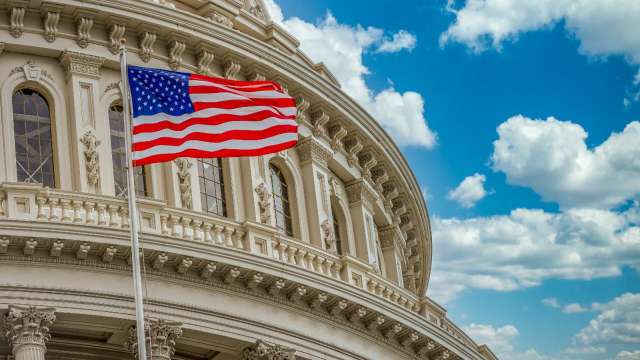The international credit rating agency Fitch (Fitch) said on Friday (2nd) that it would continue to keep the AAA credit rating of the United States on the negative watch list, and did not because the US Congress passed the debt limit bill allowing the government to fulfill its debt repayment obligations, And change the decision.
After months of bipartisan battles, the US Senate passed a bipartisan debt limit bill on Thursday that would raise the statutory $31.4 trillion government debt limit.
“A deal amid intense political partisanship and a modest reduction in the fiscal deficit over the next two years are positive factors,” Fitch said. , repeated political antagonisms will undermine confidence in governance on fiscal and debt-servicing matters.”
Fitch cited a “steady deterioration” in governance over the past 15 years, including increased political polarization and “brinkmanship” (the threat of extreme action) related to raising government borrowing ceilings and rising deficits and debt. means) happened again and again.
Fitch put the US credit rating on the watch list for downgrading last week. The agency said on Friday that it was preparing to review again in the third quarter. “The coherence and credibility of policymaking, as well as the expected medium-term profile of fiscal and debt trajectories, will be key elements of the assessment,” the statement said.
U.S. bond yields initially climbed after the release of the Fitch statement, but fell back quickly.10-Year U.S. Treasury YieldAt 3.6811%.
Ed Mills, Washington policy analyst at Raymond James, said Fitch’s decision reflected the lack of structural change in how the government responds to the debt ceiling, even with a bipartisan deal on debt limits. “Unless there is a fundamental change in the process, there is bound to be a backlash again, and there will always be the threat of mistakes,” he said.
Analysts have said that even if the Republican House of Representatives and the White House reach a deal, credit rating agencies could still downgrade the U.S. credit rating, as they did in 2011. The U.S. narrowly escaped a debt default that year, but the credit rating company Standard & Poor’s (S&P) still downgraded the U.S. credit rating by one notch.
For investors, credit rating is an indicator for assessing the risks of governments and enterprises. Generally, the lower the credit rating, the higher the cost of financing for the government or enterprise.
2023-06-02 22:55:24
#Debt #limit #bill #passed #Fitch #removed #United #States #rating #watch #list #Anue #tycoon #stocks


